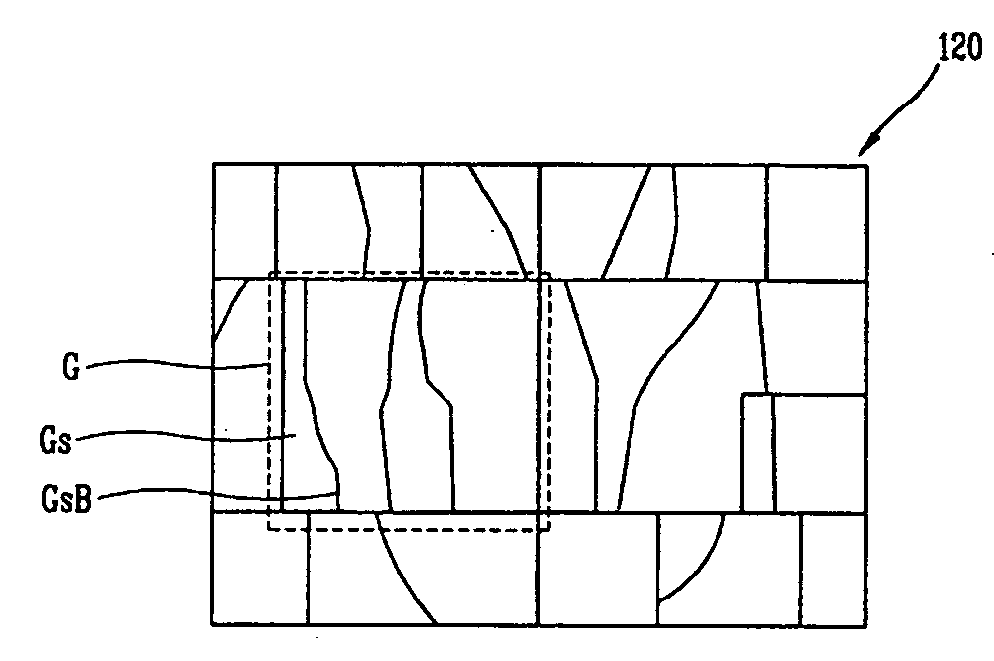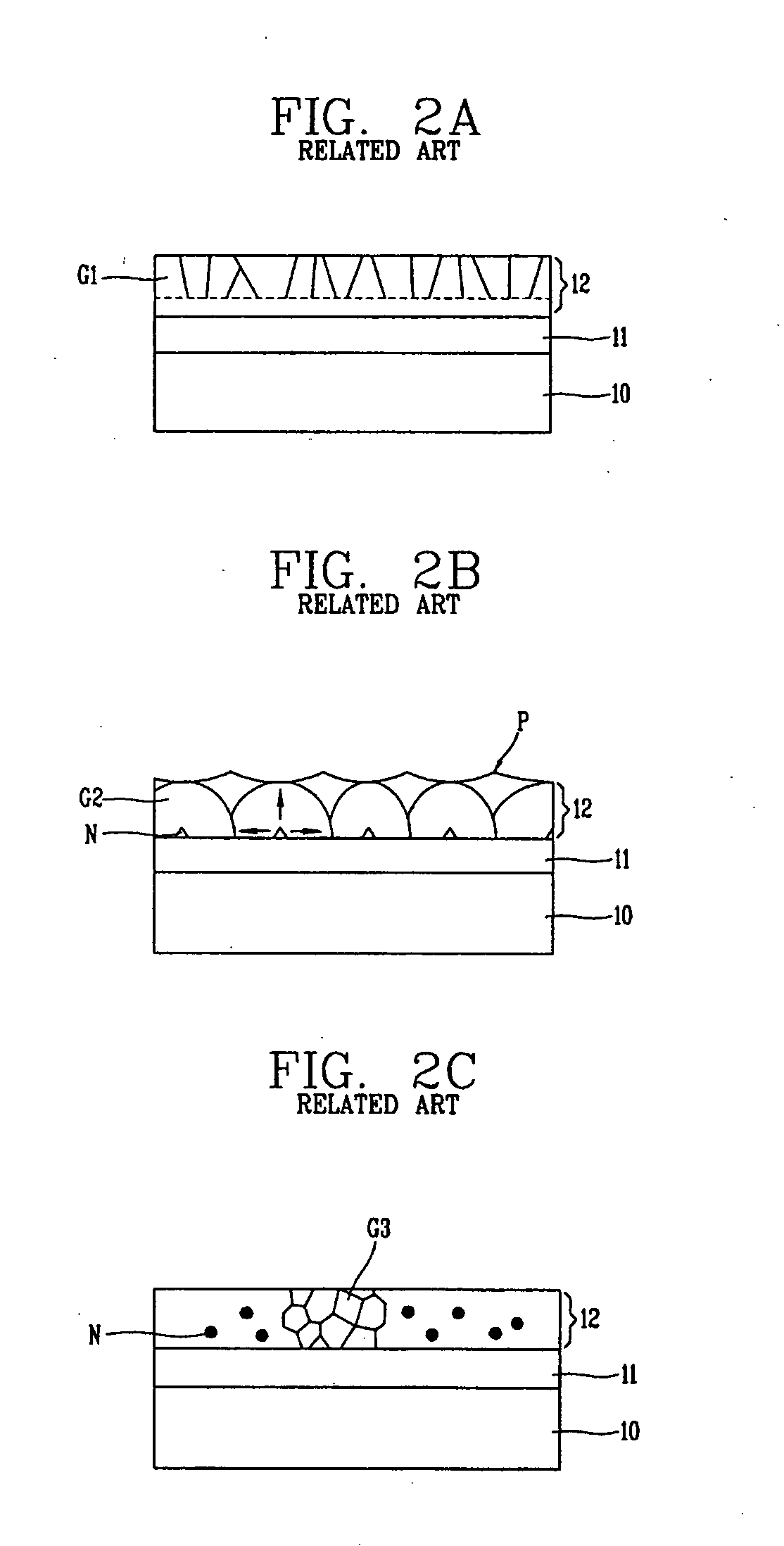Method of fabricating polycrystalline silicon thin film for improving crystallization characteristics and method of fabricating liquid crystal display device using the same
- Summary
- Abstract
- Description
- Claims
- Application Information
AI Technical Summary
Benefits of technology
Problems solved by technology
Method used
Image
Examples
first embodiment
[0042]FIGS. 3A to 3D are flow charts showing a crystallization method according to the present invention, which shows a lateral crystallization method. In said embodiment, a sequential lateral solidification (SLS) technique was used as the lateral crystallization method. However, another lateral crystallization methods, such as a selectively enlarging laser crystallization (SELAX) or a metal induced lateral crystallization (MILC), can be used. The sequential lateral solidification is a technique based upon the fact that a silicon grains grow in a vertical direction at an interface between a liquid silicon and a solid silicon as described in Robert S. Sposilli, M. A. Crowder, and James S. Im, Material Research Society Symposium Process Vol. 452, 956˜957, 1997. According to the sequential lateral solidification technique, silicon grains are laterally grown with a certain length by properly controlling a laser energy density and a laser irradiation scope to thereby crystallize amorphou...
second embodiment
[0053]FIGS. 5A to 5D are flow charts showing a fabrication method of a polycrystalline silicon thin film according to the present invention. In said preferred-embodiment, a crystallization process is performed by using an amorphous silicon thin film having a thickness of 1000˜2000 Å, which is thicker than a general thickness as an active layer of a thin film transistor. If a thickness of the amorphous silicon thin film is thick, frequency of sub grain boundaries are decreased and a polycrystalline silicon thin film having a large grain size can be obtained.
[0054] As shown in FIG. 5A, an amorphous silicon thin film 212 to be used in crystallization is deposited to a certain thickness on a buffer layer 211, which is on a substrate 210. Generally, any one of a variety of methods can deposit the amorphous silicon thin film 212. Such methods include low pressure chemical vapor deposition (LPCVD) and plasma enhanced vapor deposition (PECVD).
[0055] In the case that the amorphous silicon t...
PUM
 Login to View More
Login to View More Abstract
Description
Claims
Application Information
 Login to View More
Login to View More - R&D
- Intellectual Property
- Life Sciences
- Materials
- Tech Scout
- Unparalleled Data Quality
- Higher Quality Content
- 60% Fewer Hallucinations
Browse by: Latest US Patents, China's latest patents, Technical Efficacy Thesaurus, Application Domain, Technology Topic, Popular Technical Reports.
© 2025 PatSnap. All rights reserved.Legal|Privacy policy|Modern Slavery Act Transparency Statement|Sitemap|About US| Contact US: help@patsnap.com



